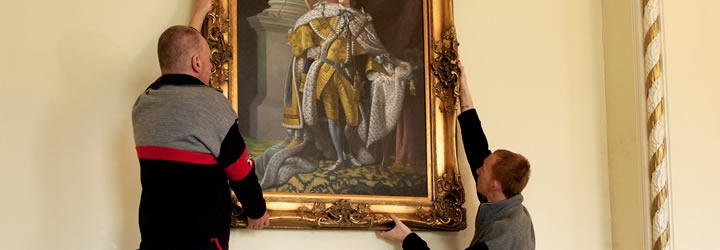Antique furniture is an essential part of a household and it gives a different charm to the whole house. Antique furniture has witnessed a lot over the years and yet they stand high and durable in the face of modern furnishings. These furnishings are not only beautiful and valuable but also full of memories and feelings as they might have passed on through generations. Antique furniture is able to withstand the test of time and survived the altering fashion trends and social norms. However, there comes a time when you have to move to another city and that heirloom’s future is in jeopardy. Well, not to be dramatic you just need to know how to move the antique furnishings that you have in your home and if you don’t, then here is a blog that will help you to.

1. Have an inventory of your furniture and other collectible items – Refer to this list once everything has been shipped to your new location. You can check whether all the items have been delivered successfully and that there is no damage to any of them. Don’t forget to make a separate inventory of all your non-antique furniture that will require special packaging and handling. Take notice of the following attributes fragility, sentimental value, aesthetic appeal and so on. If they have any scratches or dents then do include that in the list.
2. Take photo of your antiques and collectible items – Don’t forget to take pictures from all sides and angles that will serve as your proof in case something goes haywire. Take a clear pic of the existing damage and weakened or fragile parts. Do take a video of the furniture. Remember photos and videos can be used as evidence for insurance claims. Examine all the parts of each of your furniture.
3. Consider if you need to sell or move your antique furnishings – It is better to decide whether all the items in your home are actually worth the move, expense, time, and energy. Don’t just decide on a whim and regret it later. If possible, take your time to evaluate every situation and then decide. If you have decided to sell them, then the money can be used in your moving budget.
4. Get your antiques appraised – Having your furniture or any valuable item appraised will give you an idea on how much insurance coverage you might need to purchase from your moving company or insurance agent. It is important to know how much your item is worth before the actual moving day. Talk to an insurance agent or any trustworthy authorized antique dealers for any recommendations.

5. Purchase proper insurance coverage – Insurance is important as it covers the loss of any item as well as any damage done to something you own. If during the move your antique sofa gets a scratch, then you can file a claim. That’s why it is important to purchase insurance coverage that helps protect all your furniture whether it is new or old. Moving with antique furniture may be more expensive but professional movers can make sure that your antiques retain their value.
6. Examine all the parts of each of your furniture – Look at each of your antique furniture and determine the possible risks that may occur during the move. From the main part to the legs, check everything and be sure that it is in a perfect state. Even in its current condition, do check for any pre-existing damage like cracks, loose joints, dents and more. Do have a checklist for these following:
- Furniture size – Think of all the probabilities when you will be taking the furniture in your new home! It is better to measure the dimensions of your furniture and compare it to your doorways to ensure that the antique furniture can safely make its way across the hall, around narrow areas and even downstairs.
- Make a floor plan – Know the exact size and shapes of your antiques as it will enable you to arrange them in a safe, convenient, and efficient way in your new home. The floor plan gives you an idea of how the furniture will look in your home.
- Temperature and humidity – Always remember that the temperature everywhere is not the same and your furniture has to adapt to these environments. So to prevent anything from happening to your furniture, use a hygrometer or an indoor humidity monitor to measure your home’s humidity level. No matter the type of wood they are built with, extreme temperature and moisture can affect or damage your most prized possessions.
- Check the antique furniture for any problematic spots or parts – Before any move, secure any loose parts and removable pieces. It is also advisable to secure the doors with rubber straps or strings.
7. Prepare the antique item for packing – If you need to specially clean your antiques, check the local hardware shop, furniture store or antique dealer for some recommended cleaning products which you can use to clean them. Ask a licensed antique dealer for tips on how to take care of these antiques.
8. Pack, wrap and store – If you are hiring movers, it is vital that you or any other member of your family is present there so that it is easy to identify the things that need special care or handling.
Remember that antiques furniture are fragile and need extra care when moving.




This was SO helpful. We’re moving into a house finally in March. Thank you for the awesome tips! A lot of your tips are good for people like me who are going from apartment to home.
https://moving-me.com/how-much-does-a-moving-company-cost-you/